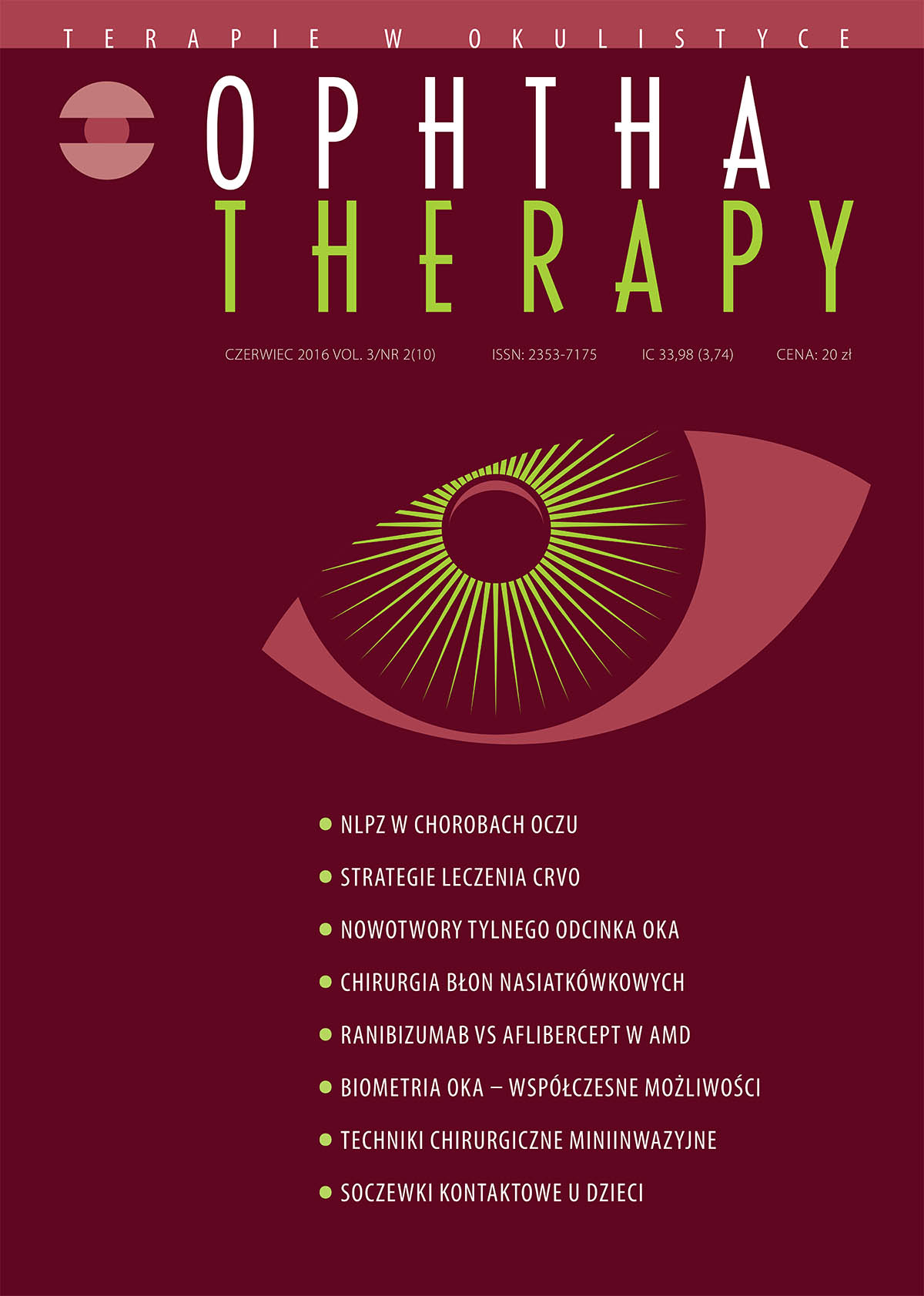Ranibizumab w terapii wysiękowej postaci zwyrodnienia plamki związanego z wiekiem u pacjentów, u których nie udało się uzyskać zadowalających efektów leczenia afliberceptem
##plugins.themes.bootstrap3.article.main##
Abstrakt
Zwyrodnienie plamki związane z wiekiem nadal pozostaje główną przyczyną nieodwracalnej utraty widzenia na całym świecie. Iniekcje doszklistkowe preparatów anty-VEGF stanowią złoty standard w leczeniu AMD. Istnieje wiele dowodów udokumentowanych badaniami klinicznymi na skuteczność i bezpieczeństwo takiego leczenia. Mimo to jest ono procesem trudnym i przewlekłym, a w niektórych przypadkach nie udaje się uzyskać pożądanych efektów ze względu na oporność na leki. Ta grupa pacjentów wymaga szybkiej zmiany terapii i konwersji jednego leku na drugi, np. zamiany afliberceptu na ranibizumab, co często okazuje się dobrą decyzją.
Pobrania
##plugins.themes.bootstrap3.article.details##

Utwór dostępny jest na licencji Creative Commons Uznanie autorstwa – Użycie niekomercyjne – Bez utworów zależnych 4.0 Międzynarodowe.
Copyright: © Medical Education sp. z o.o. License allowing third parties to copy and redistribute the material in any medium or format and to remix, transform, and build upon the material, provided the original work is properly cited and states its license.
Address reprint requests to: Medical Education, Marcin Kuźma (marcin.kuzma@mededu.pl)
Bibliografia
2. Kovach JL, Schwartz SG, Flynn HW Jr. et al. Anti-VEGF Treatment Strategies for Wet AMD. J Ophthalmol. 2012; 2012: 786870.
3. Kański JJ, Bowling B. Okulistyka kliniczna. Wyd. 4. EDRA Urban & Partner, Wrocław 2013.
4. Johnston SS, Wilson K, Huang A et al. Retrospective analysis of first-line anti-vascular endothelial growth factor treatment patterns in wet age-related macular degeneration. Adv Ther. 2013; 30(12): 1111-27.
5. Szabo SM, Hedegaard M, Chan K et al. Ranibizumab vs. aflibercept for wet age-related macular degeneration: network meta-analysis to understand the value of reduced frequency dosing. Curr Med Res Opin. 2015; 31(11): 2031-42.
6. Figurska M. Postępy w leczeniu zwyrodnienia plamki związanego z wiekiem. Okul Dypl. 2013; 3(5): 16-23.
7. Charakterystyka produktu leczniczego – Lucentis.
8. Brown DM, Kaiser PK, Michels M et al.; ANCHOR Study Group. Ranibizumab versus verteporfin for neovascular age-related macular degeneration. N Engl J Med. 2006; 355(14): 1432-44.
9. Rosenfeld PJ, Brown DM, Heier JS et al.; MARINA Study Group. Ranibizumab for neovascular age-related macular degeneration. N Engl J Med. 2006; 355(14): 1419-31.
10. Razi F, Haq A, Tonne P et al. Three-year follow-up of ranibizumab treatment of wet age-related macular degeneration: influence of baseline visual acuity and injection frequency on visual outcomes. Clin Ophthalmol. 2016; 10: 313-9.
11. Ying G, Huang J, Maguire M et al.; Comparison of Age-related Macular Degeneration Treatments Trials Research Group. Baseline predictors for one-year visual outcomes with ranibizumab or bevacizumab for neovascular age-related macular degeneration. Ophthalmology. 2013; 120(1): 122-9.
12. Gibson JM, Gibson SJ. A safety evaluation of ranibizumab in the treatment of age-related macular degeneration. Expert Opin Drug Saf. 2014; 13(9): 1259-70.
13. Yamazaki T, Koizumi H, Yamagishi T et al. Subfoveal choroidal thickness after ranibizumab therapy for neovascular age-related macular degeneration: 12-month results. Ophthalmology. 2012; 119(8): 1621-7.

